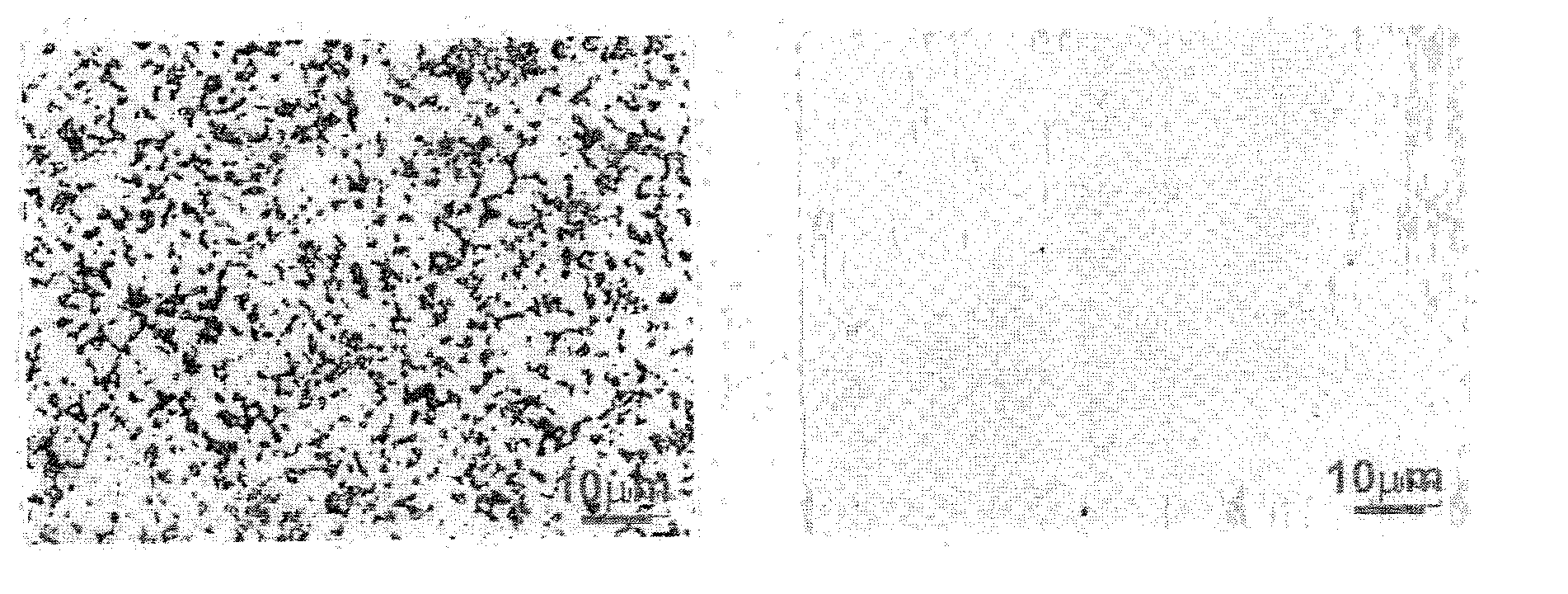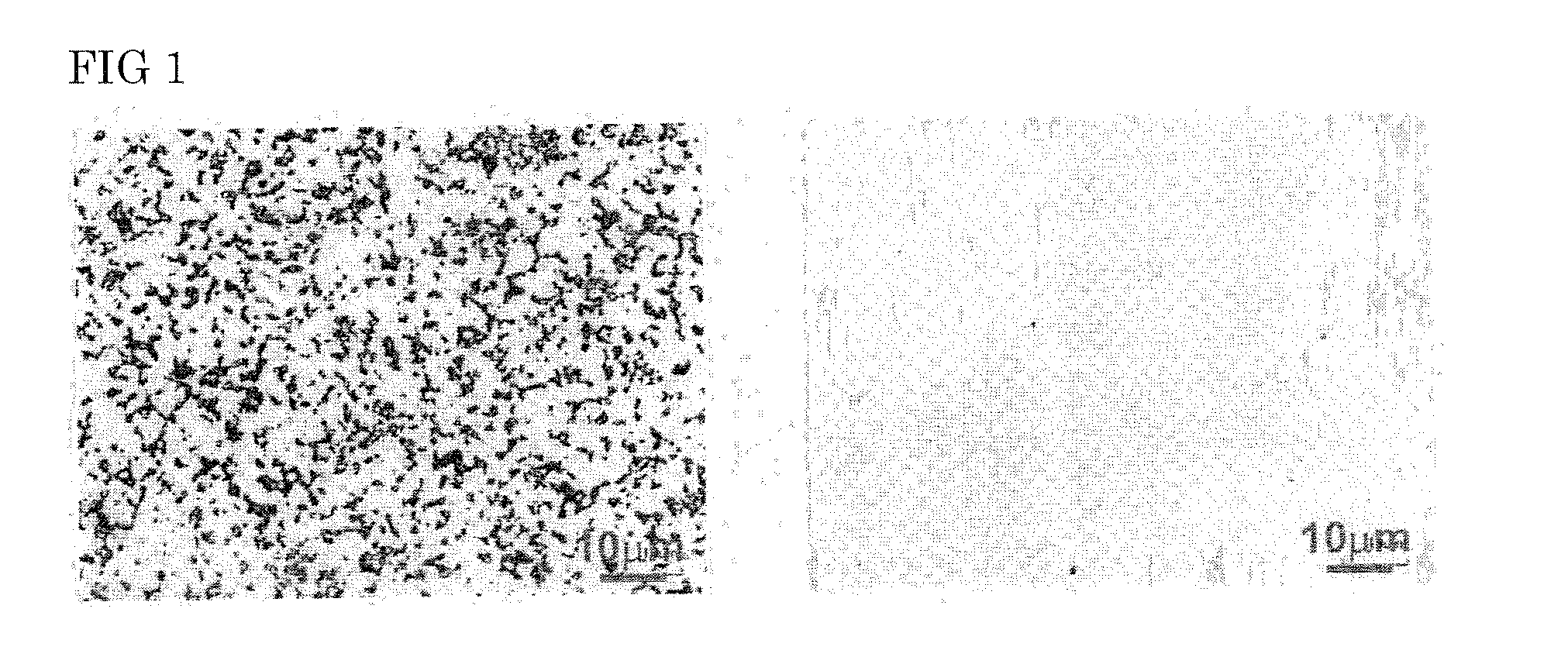Sputtering Target and Process for Producing Same
- Summary
- Abstract
- Description
- Claims
- Application Information
AI Technical Summary
Benefits of technology
Problems solved by technology
Method used
Image
Examples
example 1
[0044]Co powder, Cr powder, Pt powder, and SiO2 powder were used as the raw material, and a target raw material was obtained based on the production conditions of hot pressing and HIP. The volume ratio of SiO2 without ductility in this target was 25%, and the average grain size of the SiO2 grains was 2 μm. The major component of the matrix phase was a uniform Co—Cr—Pt alloy.
[0045]After performing primary processing of cutting using a lathe to finalize a target shape, grinding processing was additionally performed, and the processes of wet secondary polishing including wet primary polishing based on pure water drop→alumina polishing agent drop were performed to adjust the surface and obtain a target.
[0046]The average surface roughness of the target in which the surface roughness was adjusted as described above; specifically, the measurement results of the center-line average surface roughness Ra, the ten-point average roughness Rz, the distance between local peaks (roughness motif) A...
example 2
[0052]Other than achieving Ra of 0.256 μm, Rz of 1.234 μm, AR of 118.76 μm, and AW of 1530.50 μm in the processes of wet secondary polishing, a cobalt coated target was produced based on the same production conditions as Example 1, and a sputtered film was formed on a substrate in an Ar 1.5 Pa atmosphere under the DC sputtering condition of 30 w / cm2.
[0053]When observing the particles that were generated during the sputtering, the size of the particles was approximately 1 μm×1 μm (“long diameter×short diameter”; hereinafter the same), and there was hardly any difference in comparison to the grain size of oxides of approximately 1 μm×1 μm.
[0054]The results are similarly shown in Table 1. In addition, the number of defectives (defectives / mm2) caused by the particles was reduced to 2.2.
[0055]Even if the renter-line average surface roughness Ra is outside the range of 0.1 μm or less, the ten-point average roughness Rz is outside the range of 0.4 μm or less, distance between local peaks (...
PUM
| Property | Measurement | Unit |
|---|---|---|
| Length | aaaaa | aaaaa |
| Length | aaaaa | aaaaa |
| Length | aaaaa | aaaaa |
Abstract
Description
Claims
Application Information
 Login to View More
Login to View More - R&D
- Intellectual Property
- Life Sciences
- Materials
- Tech Scout
- Unparalleled Data Quality
- Higher Quality Content
- 60% Fewer Hallucinations
Browse by: Latest US Patents, China's latest patents, Technical Efficacy Thesaurus, Application Domain, Technology Topic, Popular Technical Reports.
© 2025 PatSnap. All rights reserved.Legal|Privacy policy|Modern Slavery Act Transparency Statement|Sitemap|About US| Contact US: help@patsnap.com


